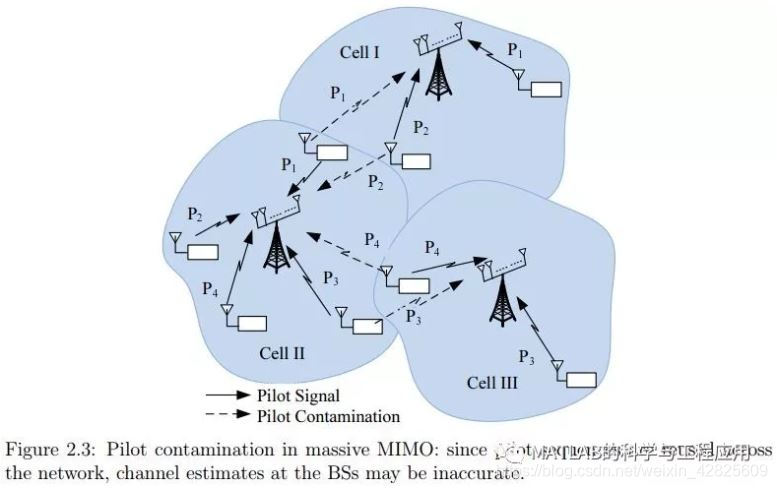
本文为加拿大不列颠哥伦比亚大学(作者:Naga Raghavendra Surya Vara Prasad Koppisetti)的硕士论文,共128页。
随着我们向第五代(5G)无线网络发展,比特每焦耳能量效率(EE)度量已经成为一个重要的设计标准,因为它需要在实际负担得起的能量消耗水平下工作。5G的关键技术之一是最近提出的大规模多输入多输出(MIMO)技术,这是多用户MIMO中基站(BS)天线过剩的特殊情况。然而,从大规模MIMO(MM)网络中获得高EE增益的技术至今尚未得到积极研究。本文试图通过以下方法解决上述缺陷:(1)从EE的角度回顾MM技术,(2)批判地分析现有技术,提出在“混合MM”网络中实现EE最大化的新研究方向,其中大规模MIMO与其它新兴的5G技术并驾齐驱,以及(3)提出一种MM网络中EE最大化的创新的资源分配方案。论文主要由三个部分组成。
在第一部分中,我们讨论了对EE的实际需求,并解释了为什么大规模MIMO有望成为5G网络的节能技术。在第二部分中,我们重点分析了三种混合MM网络中EE最大化的机会,即基于毫米波的MM网络、基于MM的异构网络和基于能量收集的MM网络。我们分析了现有技术的局限性,并提出了几个有前途的研究方向,如果继续研究下去,将极大地帮助网络运营商设计混合MM网络。在第三部分中,我们提出了一种新的优化MM网络资源分配的EE最大化方案。针对EE问题,对BS天线数量、导频功率和数据功率这三种通信资源进行了优化。由于优化问题很难以原始形式求解,因此我们提出了一种新的求解方法,其中每次迭代都求解出凸规划子问题的一系列差分结果。仿真结果对于网络设计者来说没有多少有趣的指导。例如,使用比数据功率更高的导频功率可以提高系统EE,特别是在信噪比高的情况下。此外,BS天线的数量应该用可获得的功率预算进行优化,以确保在峰值EE时正常工作。
As we progress towards the fifth generation(5G) of wireless networks,the bit-per-joule energy efficiency (EE) metric becomes an important designcriterion because it allows for operation at practically affordable energyconsumption levels. In this regard, one of the key technology enablers for 5G is the recently proposed massivemultiple-input multiple-output (MIMO) technology, which is a special case ofmultiuser MIMO with an excess of base station (BS) antennas. However,techniques for extracting large EE gains from massive MIMO (MM) networks havenot been actively investigated so far. We seek to address the above limitationin this thesis by (i) reviewing MM technology from an EE perspective, (ii) criticallyanalyzing the state-of-the-art and proposing new research directions forEE-maximization in “hybrid MM” networks, where massive MIMO operates alongsideother emerging 5Gtechnologies, and (iii) proposing a novel resource allocation scheme for EE-maximizationin MM networks. The thesis consists of three main parts. In the first part, wemotivate the need for EE and explain why massive MIMO is promising as anenergy-efficient technology enabler for 5Gnetworks. In the second part, we critically analyze opportunities forEE-maximization in three types of hybrid MM networks, namely, millimeter wavebased MM networks, MM-based heterogeneous networks, and energy harvesting basedMM networks. We analyze limitations in the state-of-the-art and propose severalpromising research directions which, if pursued, will immensely help networkoperators in designing hybrid MM networks. In the third part, we propose anovel EE-maximization scheme which optimizes resource allocation in an MMnetwork. Three communication resources, namely, the number of BS antennas,pilot power, and data power are optimized for EE. Since the optimizationproblem is difficult to solve in its original form, we propose a novel solutionapproach where each iteration solves a sequence of difference of convexprogramming subproblems. Simulation results render few interesting guidelinesfor network designers. For example, using higher pilot power than data powercan improve the system EE, particularly when SNR is high. Also, the number ofBS antennas should be optimized with the available power budget to ensureoperation at peak EE.
1 研究动机
2 大规模MIMO简介
3 混合大规模MIMO系统:能量效率设计的机遇与挑战
4 多小区大规模MIMO系统上行数据传输中基于MRC检测器的能量效率最大化设计
5 结论与未来工作展望
附录 第四章一些结论的证明
下载英文原文地址:
http://page2.dfpan.com/fs/9lcej2421e2961612a4/
更多精彩文章请关注微信号: